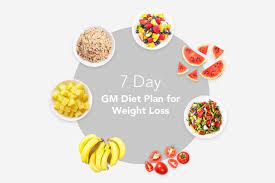Embarking on a journey to better health doesn’t mean sacrificing flavor or feeling overwhelmed. Introducing our meticulously crafted Healthy Living 7-Day Weight-Loss Meal Plan for High Blood Pressure – your passport to a healthier, lighter you Designed with simplicity in mind, this meal plan effortlessly blends delicious flavors with the science-backed power to combat high blood pressure. Say goodbye to the confusion of what to eat and embrace a week-long adventure of nourishing meals that prioritize your heart health. Let’s make weight loss not just achievable but enjoyable, as we pave the way to a vibrant, healthier lifestyle with our purposeful 7-day plan.

Heart-Healthy Foods to Focus On:
Managing high blood pressure requires a healthy diet.You should include these heart-healthy foods in your diet:
Sodium levels are balanced by leafy greens like spinach, kale, and Swiss chard, which are rich in potassium.
Berries: Blueberries, strawberries, and raspberries are packed with antioxidants and can contribute to heart health.
Oats: High in fiber, oats help regulate blood pressure and promote a feeling of fullness.
Fatty Fish: Salmon, mackerel, and trout contain omega-3 fatty acids, which support heart health.
Bananas: A potassium-rich fruit that aids in maintaining healthy blood pressure levels.
Nuts and Seeds: Almonds, walnuts, flaxseeds, and chia seeds provide heart-healthy fats and essential nutrients.
How to Meal-Prep Your Week of Meals:
Efficient meal preparation is key to sticking to your weight-loss plan. Follow these steps for successful meal prep:
Plan Ahead: Create a weekly meal plan, incorporating a variety of heart-healthy foods.
Batch Cooking: Prepare larger quantities of staples like whole grains, lean proteins, and vegetables to use throughout the week.
Portion Control: Divide meals into appropriate portions to avoid overeating.
Storage: Use airtight containers to keep meals fresh. Consider freezing some portions for later in the week.

Day 1:
Breakfast (347 calories):
Oatmeal with sliced bananas and a sprinkle of chia seeds.
A.M. Snack (129 calories):
A handful of mixed berries.
Lunch (376 calories):
Grilled chicken salad with spinach, cherry tomatoes, and a vinaigrette dressing.
P.M. Snack (203 calories):
Greek yogurt with honey and a handful of almonds.
Dinner (433 calories):
Baked salmon with quinoa and steamed broccoli.
Day 2:
Breakfast (353 calories):
Whole grain toast with avocado and poached eggs.
A.M. Snack (62 calories):
Sliced cucumber with hummus.
Lunch (380 calories):
Quinoa bowl with black beans, diced tomatoes, and a squeeze of lime.
P.M. Snack (285 calories):
Apple slices with almond butter.
Dinner (413 calories):
Stir-fried shrimp with brown rice and assorted vegetables.
Day 3:
Breakfast (353 calories):
Greek yogurt parfait with fresh berries and granola.
A.M. Snack (154 calories):
Cottage cheese with pineapple chunks.
Lunch (380 calories):
Lentil soup with a side of mixed green salad.
P.M. Snack (121 calories):
Carrot sticks with hummus.
Dinner (498 calories):
Grilled chicken breast with sweet potato wedges and asparagus.
Day 4:
Breakfast (295 calories):
Smoothie with spinach, banana, and almond milk.
A.M. Snack (285 calories):
Trail mix with nuts and dried fruit.
Lunch (380 calories):
Turkey and avocado wrap with whole grain tortilla.
P.M. Snack (95 calories):
Orange slices.
Dinner (426 calories):
Baked cod with quinoa and roasted Brussels sprouts.
Day 5:
Breakfast (353 calories):
Whole grain pancakes with fresh berries and a drizzle of honey.
A.M. Snack (105 calories):
Yogurt with sliced peaches.
Lunch (380 calories):
Chickpea salad with cucumber, cherry tomatoes, and feta cheese.
P.M. Snack (206 calories):
Mixed nuts.
Dinner (474 calories):
Vegetable stir-fry with tofu and brown rice.
Day 6:
Breakfast (353 calories):
Scrambled eggs with sautéed spinach and whole grain toast.
A.M. Snack (202 calories):
Sliced apple with peanut butter.
Lunch (367 calories):
Quinoa and black bean bowl with diced avocado.
P.M. Snack (161 calories):
Grapes.
Dinner (403 calories):
Grilled tilapia with quinoa and roasted zucchini.
Day 7:
Breakfast (295 calories):
Overnight oats with mixed berries and a dollop of Greek yogurt.
A.M. Snack (285 calories):
Cottage cheese with pear slices.
Lunch (367 calories):
Caprese salad with whole grain bread.
P.M. Snack (103 calories):
Sliced bell peppers with guacamole.
Dinner (473 calories):

Baked chicken breast with sweet potato mash and green beans:
Follow this Healthy Living 7-Day Weight-Loss Meal Plan for High Blood Pressure , and consult with a healthcare professional for personalized advice on managing high blood pressure through diet and lifestyle changes.
Conclusion:
In summary, the Healthy Living 7-Day Weight-Loss Meal Plan for High Blood Pressure offers a well-rounded approach to managing weight and cardiovascular health. By focusing on nutrient-rich, low-sodium foods, portion control, and mindful eating, the plan promotes sustainable habits. The emphasis on hydration and flexibility makes it adaptable to individual preferences. While effective for Healthy Living 7-Day Weight-Loss, it also addresses high blood pressure through a holistic dietary strategy. It’s crucial for individuals to consult with healthcare professionals before starting such a plan. Overall, this meal plan provides a practical guide for those seeking a healthier lifestyle, combining nutrition and mindful eating for lasting well-being.
FAQS:
Q1:What is the best diet for weight loss and high blood pressure?
A balanced approach, such as the DASH diet, emphasizing fruits, vegetables, whole grains, and lean proteins. Limit sodium, saturated fats, and cholesterol.
Q2:What is the diet chart for high blood pressure?
Sample Diet:
Breakfast: Oatmeal with berries.
Snacks: Apple slices with almonds.
Lunch: Grilled chicken salad with quinoa.
Snack: Carrot and celery sticks with hummus.
Dinner: Baked fish with steamed broccoli and sweet potatoes.
Q3:Is boiled egg good for high blood pressure?
Boiled eggs can be included in moderation as they provide protein and nutrients.
Q4:What are high blood pressure reducing meals?
Salmon with vegetables.
Leafy greens and berries smoothie.
Quinoa and vegetable stir-fry.
Lean turkey or tofu tacos.
Consult a healthcare professional for personalized advice and include regular exercise for overall health.


